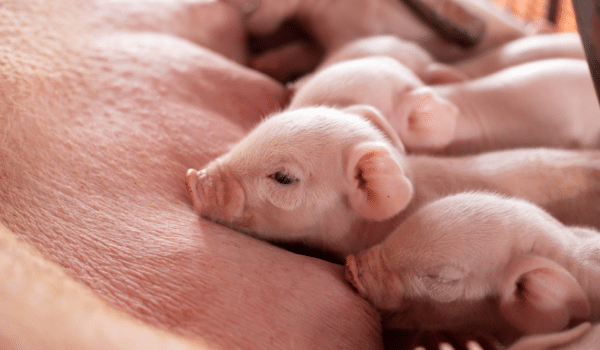The most important factor is the vitality of the piglets at birth. There are many parameters to express vitality, it is complicated to take everything into account. Litter size is also an important factor to consider.
Weight recovery of sows after gestation is a factor to improve piglet vitality. It is also important to maintain the body condition of the sow at the end of gestation as she tends to go to her own ressources to supplement the piglets’ needs.
The gestation period is divided into two parts:
Depending on the natural physiology of the sow, a high feed intake at the beginning of gestation and a reduced feed intake at the end of gestation is recommended. Therefore, ad libitum feeding should be preferred for pregnant sows. Some studies have highlighted the change in nutritional requirements of sows according to the number of parturitions. Therefore, a different gestation ration should be used depending on the previous number of farrowings (nulliparous/primiparous vs. multiparous).
The last phase of gestation is a critical time to control, as the sow will draw on her ressources to meet the nutritional needs of the foetuses. This has a direct impact on weight loss after farrowing. The objective is to maintain weight loss at a maximum of 10 to 13%.
Furthermore, the amino acid profile between early and late gestation has a direct impact on piglet vitality (e.g. piglet birth weight). Energy is also an essential component, in addition to its role on piglet vitality, it is involved in the farrowing process: the more energy there is, the shorter the farrowing will be. On the other hand, an increase in crude protein would do the opposite. Protein is detrimental to gut health through its effect on fermentations and the change in bacterial diversity.
In theory, it would be necessary to multiply the feeding programmes to best meet the needs of the females. In practice, it is difficult to apply this, particularly because of the number of feed chains available or silos. Some farmers have opted for a transition feed when the sows enter the maternity and before farrowing; this requires a great deal of effort because distribution is in most cases is done manually.
